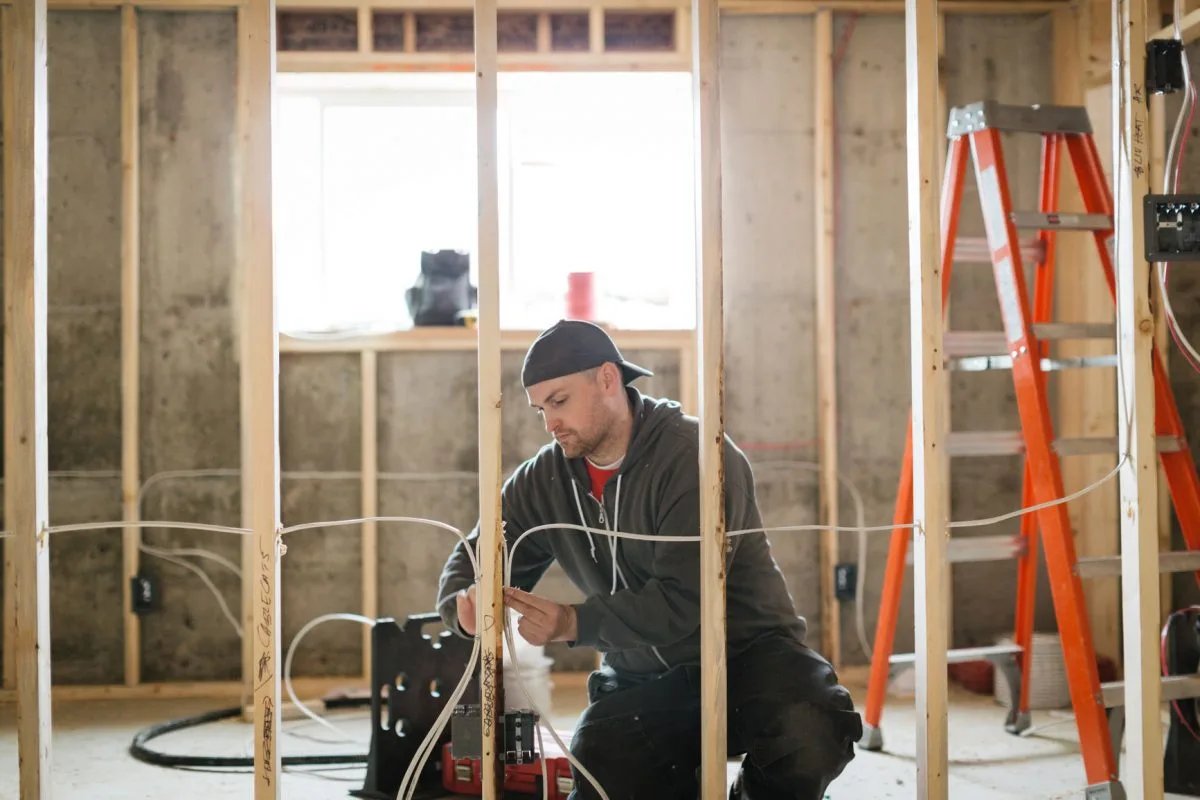
We scraped thousands of job listings on Indeed.com to determine the approximate number of electrician job openings within each state, the average hourly rate for those openings, as well as the number of entry-level, mid-level, and senior-level jobs.
Electrician job openings in the U.S.
Considering getting into the electrical industry? Or do you own an electrical business?
If so, it’s critical that you know the average pay rate for electricians. After all, how can you get paid what you’re worth if you don’t know what the average electrician makes? Or how can you set competitive salaries that will attract top candidates?
You need to know the data.
In the second part of our series based on Indeed.com electrician job listings, we take a close look at job openings and pay rates in each state to give you a sense for the going rate for electrician roles and competition in your area. (Check out the first part for national salary data.)
We break down the number of jobs by state, how many of those jobs are entry, mid, and senior-level, and the average hourly rate for each state.
Number Of Electrician Job Openings By State
First, let’s focus on the number of job openings available within each state. This data can give you a sense of where demand is greatest for electricians.
The state with most job openings is Texas, with 1,614 posted electrician jobs.
The state with the least number of posted jobs is Vermont, with 29 electrician jobs available.
This data tracks reasonably well with overall populations of each state, and it makes sense on an intuitive level. The greater the population in a given state, the more customers there will be and the higher the demand will be for electricians. Bigger states equal more demand.
These state-by-state numbers also provide clues as to where you might have the most success finding a job as an electrician. You’re more likely to find a job in a state with a larger population, such as California or Texas, than a smaller state like Vermont.
When it comes to the overall market, if you live in a smaller state, the competition is going to be significantly higher when it comes to the available electrician job openings. This is due to significantly fewer job openings.
On the other hand, business owners in states with more job openings may have a more difficult time filling positions with qualified candidates. The more job openings there are, the more difficult it may be to find electricians with the skills necessary to fill those jobs.
Analyzing Electrician Job Listings By Experience Level
Now, let’s analyze how the job listings break down by experience level. We’ll look at how many entry-level, mid-level, and senior-level jobs are available by state.
Depending on your overall experience, this data can help you evaluate in which state you’re most likely to find a job. It can also give you a feel for overall demand levels for each position.
If you’re a business owner, this data can give you a sense of the electrical industry as a whole. Is there a higher demand for entry-level positions? What types of positions are your competitors hiring? Should you be hiring more employees for a given position? Etc.
Entry-Level Electrician Jobs
Just getting started in the electrical industry? Here are the number of entry-level jobs available.
- The state with the highest number of entry-level jobs is Texas, with 702 jobs.
- The state with the least number of entry-level jobs is Vermont, with 13 jobs.
Mid-Level Electrician Jobs
You’re in the hunt for a mid-level job. You’ve been in the industry for a few years and are looking to move up from your entry-level position. Here are the states with the most and least mid-level jobs:
- Texas also has the most mid-level jobs, with 697 posted jobs.
- Vermont has the least number of mid-level positions, with just 12 listings
Senior-Level Electrician Jobs
You’ve got years of experience under your belt and you’re looking for a senior level job. Here are the states where you’re most and least likely to find such a job.
- Texas rounds it out with 29 posted senior-level jobs.
- Numerous states have zero senior-level jobs listed!
Like the previous numbers, this data seems to correlate closely with the overall population levels of the states. States with high populations generally have more jobs at all levels than smaller states (Texas especially), making it significantly easier to secure a job in those larger states (not accounting for factors such as potential increased competition from other job seekers).
On the flip side, the more years of experience you have, the harder it may be to find a job in every state, given that the percentage of senior-level jobs available is so much smaller than mid-level and entry-level jobs.
It’s much harder to find a job commensurate with your experience and the competition will be much higher for those senior-level jobs.
Average Earnings For Current Open Positions
Now, let’s take a closer look at the average hourly rate for all electrician positions across all the states.
This data can help you know what you may earn if you work in a particular state, as well as what you should consider paying employees if you own an electrical business and you’re looking to hire.
Note that the average earnings span all positions, all the way from the lowest roles, such as an Apprentice Electrician or temporary/hourly work, to the most-senior positions, such as a Master Electrician.
The national average hourly rate for all plumbing positions is $25.46.
- The state with the highest average hourly rate is Massachusetts at $37.87/hour. This is 48.74% higher than the national average.
- The state with the lowest average hourly rate is Oklahoma at $15.94/hour. This is 43.19% lower than the national average.
Interestingly, this data does not seem to correlate with the population numbers of the states. This seems to suggest that the average hourly rate for electrician jobs is more closely tied to the cost of living.
The data also suggests that competition for electrician jobs in Massachusetts may be higher than in other states given the higher average pay. Electrician jobs in Massachusetts will simply attract more job seekers given the excellent pay.
In general, markets with a higher average hourly wage suggest a more competitive market for electrician jobs. However, this is not always the case and the average hourly amounts can be significantly impacted by other factors.
Just a few jobs that pay particularly well or have a low pay rate can weight the average in one direction or another.
Final Takeaways
The most obvious takeaway from the above data is that the total number of job openings and the number of openings by experience correlates closely with the overall population levels of states. The bigger a state, the bigger the population and the more need there is for electricians. When deciding which state to work in it is also essential to know the state by state licensing requirements for electricians.
Texas offers the most jobs at all levels. Much smaller states, such as Vermont, offer significantly fewer options in terms of electrician jobs available. If you’re searching for an electrician job, you’ll probably need to take these realities into account.
If you’re hiring electricians, you can look at your state’s average salary, compare it to the national average, and then use this data to shape the salaries you offer.
For example, if you want to higher quickly and you know that your state only pays 60% compared to the national average, you can offer a higher salary to attract qualified candidates more quickly. Or you can offer a salary on par with the state average an incur fewer costs.
It appears that the labor market is going to continue to tighten. As this happens, we should expect overall wages to rise and the demand for electricians to increase. This may, in turn, increase wages as well as the overall competition for hiring qualified electricians.
If you own an electrical business, this means that the amount you pay employees probably needs to be at least on part with the average cost of living in your state. If it’s not, you’ll probably have a difficult time finding qualified electricians.











